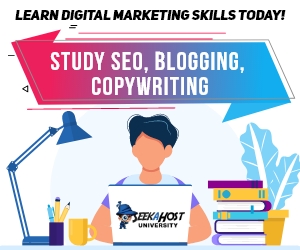Navigating the world of presentations as a student can be quite a nerve-wracking experience.
You’re still honing your presentation skills and haven’t found your stride to confidently address large audiences. It’s perfectly normal to feel a sense of intimidation in such situations, but remember, you’re far from being the only one in this boat.
In truth, almost everyone, regardless of what they might say, experiences some degree of anxiety before stepping into the spotlight, especially students who are just starting in this arena.
Thankfully, there exists a plethora of effective strategies and presentation tools that can help alleviate your presentation jitters while enhancing your overall performance. These presentation tips are tailor-made to empower students on their journey to success.
1. Make Visual Aids

Much like you wouldn’t relish enduring an extended presentation characterized by a monotonous monologue, your audience shares the same sentiment. Let’s distract them and ourselves from boredom by adding some delightful visual elements. To jazz up our presentation, let’s use some handy presentation tips to create beautiful infographics, engaging charts, and exciting videos.
This will make the whole experience more enjoyable for our audience. Plus, these visual aids can serve as friendly reminders to keep us on track and ensure our message stays on point. To enhance the quality of your visual charts and photos, consider using an AI image extender.
2. Go Beyond the Surface Knowledge
It’s essential to understand the topic you’re addressing deeply. Create comprehensive speaking notes that delve into the intricacies of your subject matter. These notes will serve as a reliable resource, ensuring you’re well-prepared to tackle any inquiries that may arise from your audience.
There’s no need to fret if you encounter a question for which you don’t have an immediate answer. Simply reassure your audience that you’ll delve further into the matter and provide a follow-up response after the presentation.
3. Addressing Presentation Anxiety
Before your presentation, it’s important to tackle any anxiety you may feel. Think of it as pre-game preparation before the big match. To help alleviate your nerves, you can try various techniques such as vocalizing the title of your presentation, engaging in some light physical activity like hopping around, or even practicing your entire presentation in front of a mirror.
pre-game preparation before the big match. To help alleviate your nerves, you can try various techniques such as vocalizing the title of your presentation, engaging in some light physical activity like hopping around, or even practicing your entire presentation in front of a mirror.
Before your presentation, you’ve got to get yourself pumped up and full of spirit. The mindset you adopt for the presentation sets the tone. If you approach it with enthusiasm and excitement, you retain that energy throughout, you will also be able to entertain your audience.
4. Embrace Your Unique Personality
It’s quite common for students to adopt a formal and rigid speaking style when giving presentations, and unfortunately, this can lead to a lacklustre and unengaging delivery. It’s crucial to let your personality shine through. Infusing a conversational tone into your speech will make you more relatable and convey professionalism.
Take the time to explore your audience’s demographics to gain insights into the most effective communication methods tailored to them. This personalized approach will enhance your connection with your audience and make your presentation more engaging.
5. Take Your Time
When you speak too quickly, your words are racing ahead, and it can be challenging to keep up. You might find yourself trying to catch your breath and struggling to stay on track. This can make you seem scattered and not in control of your presentation, which isn’t the impression you want to leave.
What’s more, when you speak too fast, it can be harder for your audience to follow your words. They might miss important points, and the overall message can get lost in the rush.
6. Avoid Reading Your Slides Aloud
Reading your slides during a presentation is a definite don’t. It can make you come across as careless, unprofessional, and ill-prepared. When a slide is filled with lots of text, it’s human nature for the audience to try to read it. However, our brains can only process so much information simultaneously, making it challenging for the audience to read the slides and listen to you effectively.
as careless, unprofessional, and ill-prepared. When a slide is filled with lots of text, it’s human nature for the audience to try to read it. However, our brains can only process so much information simultaneously, making it challenging for the audience to read the slides and listen to you effectively.
Instead, opt for slides that feature keywords or key points to reinforce your arguments. Let your slides complement your speech rather than serve as a substitute for it. This approach will keep your audience engaged and enhance your overall presentation.
7. Make Jokes
Using humour is a powerful and engaging way to convey your message effectively. When used appropriately, it can also make your presentation more memorable.
You have various options for incorporating humour into your presentation. You can employ witty catchphrases, clever analogies, amusing cartoons, or draw from your life experiences. Personal anecdotes often brim with funny details, and when you share something that’s happened to you, your audience may relate, making the story all the more humorous and relatable.
8. Eye Contact for Better Communication
Pay close attention to your audience’s reactions as you speak. By observing cues like nodding heads and signs of focused attention, you can gauge their engagement and adjust your delivery accordingly.
If you notice someone looking confused, it’s a signal to provide further clarification and become more attuned to your audience’s needs. When you shift your focus from yourself to your audience, you slow down your pace, making your message clearer and more accessible. That’s why maintaining eye contact plays a crucial role in effective communication.
9. Be Punctual and Well-Prepared

Being punctual is of paramount importance when it comes to giving a speech. You don’t want to be the presenter who rushes into the room at the very last moment, only to find that the equipment isn’t functioning, the setup isn’t as expected, and the necessary materials are nowhere to be found. It’s a recipe for chaos.
To avoid such mishaps, all it takes is arriving a bit earlier. This gives you ample time to double-check everything and ensure your presentation goes smoothly without any unexpected hiccups. So, make it a priority to arrive early and be well-prepared—it’s a simple yet effective way to set yourself up for success.
10. Let Your Enthusiasm Shine
Without the same fervent enthusiasm for your topic that you feel when talking about something you are really passionate about, it becomes much harder to persuade your listeners to accept your viewpoint. Find one aspect of your topic that you really love. You must believe in your rationale, be thoroughly prepared and show enthusiasm for the topic.
Conclusion
Put your passion into practice. Establish eye contact with your listeners, gesture naturally (making expressive moves especially when you are on stage in front of a large audience), maintain a true smile on your face, and let your joyful expression reverberate in the pitch of your voice. When you’re passionate, you are more likely to get your ideas across and impress your audience.
Author Profile

- Shirley Owen is a blogger and writer who enjoys writing blogs on education, technology and general news. An avid reader, she follows all the latest news & developments to report on them through her articles.
Latest entries
 educationDecember 11, 2025Making Education Accessible for Mobile Families that Travel
educationDecember 11, 2025Making Education Accessible for Mobile Families that Travel learningOctober 28, 20257 Daily Classroom Strategies Helping Children With Learning Differences Thrive
learningOctober 28, 20257 Daily Classroom Strategies Helping Children With Learning Differences Thrive  ed techSeptember 29, 2025How to use VR to Ace your next Exams
ed techSeptember 29, 2025How to use VR to Ace your next Exams educationSeptember 18, 2025A Guide to the European Accessibility Act for Schools and Universities
educationSeptember 18, 2025A Guide to the European Accessibility Act for Schools and Universities







